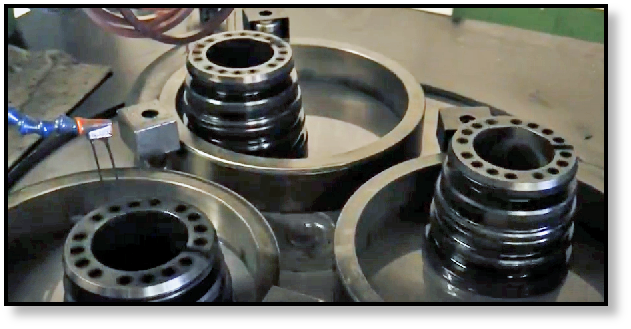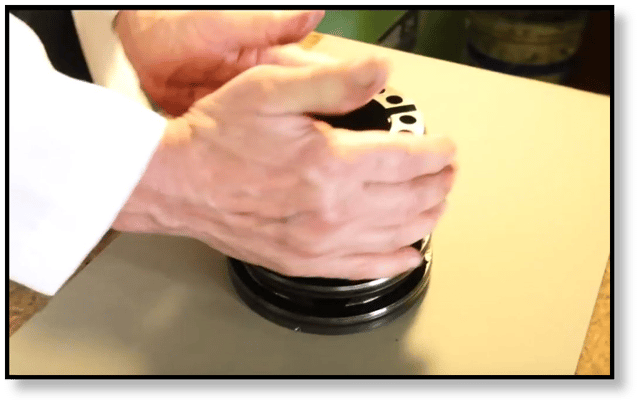Texas Final Drive and Lapping Tables
One of the tools used to restore certain final drive components to usability at Texas Final Drive is a lapping table. Lapping is a manufacturing process that produces a smooth, flat surface on a part. The particular process we use for final drive parts is officially termed free abrasive lapping. In this Shop Talk Blog post, we are going to talk about the lapping process and how it applies to final drive motors.
What is Lapping?
A lapping table is a large, rotating stone that you lay a part on, with the part surface that needs to be smoothed laying face down on the stone. An abrasive mixture called a slurry flows at regular intervals onto the part and the stone. The slurry is what produces that flat surface: as the stone rotates, the slurry grinds metal off the part until it’s surface is flat -- which is the lapping process in a nutshell. The slurry we use is actually oil mixed with a cutting compound.
Lapping and Final Drives
A lapping table is used to restore surfaces that need to be smooth and flat to extremely tight toleraces. For example, it can bring certain types of components back to OEM specification to minimize case drain. These kinds of components need to match and mate perfectly; otherwise, the unit will suffer blow by and will not have as much power. In fact, when a hydraulic motor is being evaluated this is a common procedure used to restore power to the unit.

In this image (and in the video) lapping was performed on three distributors. Much like its name, a distributor's job is to distribute fluid to the rotating group that turns the axle. Depending on how bad the damage is, this part can be restored to the proper surface finish and flatness using the lapping table. This process is much more economical that simply replacing the part. The lapping table would be used to create a new, flat surface that is free of dents, divots, scratches, and areas out of flatness. In this case, that process proved successful. However, lapping won’t always make a part with a damaged surface usable again.
How Does the Lapping Process Work?

Here you can see our Lapmaster 24 lapping table at work. The blue flexible tubing with the orange tip is what is used to automatically distribute the slurry onto the rotating stone. In this case, the stone has three conditioning rings on it to allow three different parts to be processed at the same time. Parts usually take on average 23 minutes with the settings we have on our machine. Some parts, of course, may take longer.
Hand lapping is sometimes required after the automated lapping is complete. The image below shows Walter hand lapping a distributor on a Starrett crystal pink granite surface plate using Lapmaster 4/0 polishing paper. Even after lapping, the parts are re-evaluated to determine if the lapping process did make them serviceable again. If it does not restore the surface sufficiently, the part is discarded.

Importance of Lapping
Lapping is one of the many processes that go into restoring a final drive to OEM or better specifications, but remains a vital part of the reman process. It does an excellent job of restoring parts to extremely high tolerance of flatness and smoothness and is used to restore final drives and hydraulic motors to optimum perfomance levels. It is not unusual to find components that need lapping when it comes time to fix a final drive.


